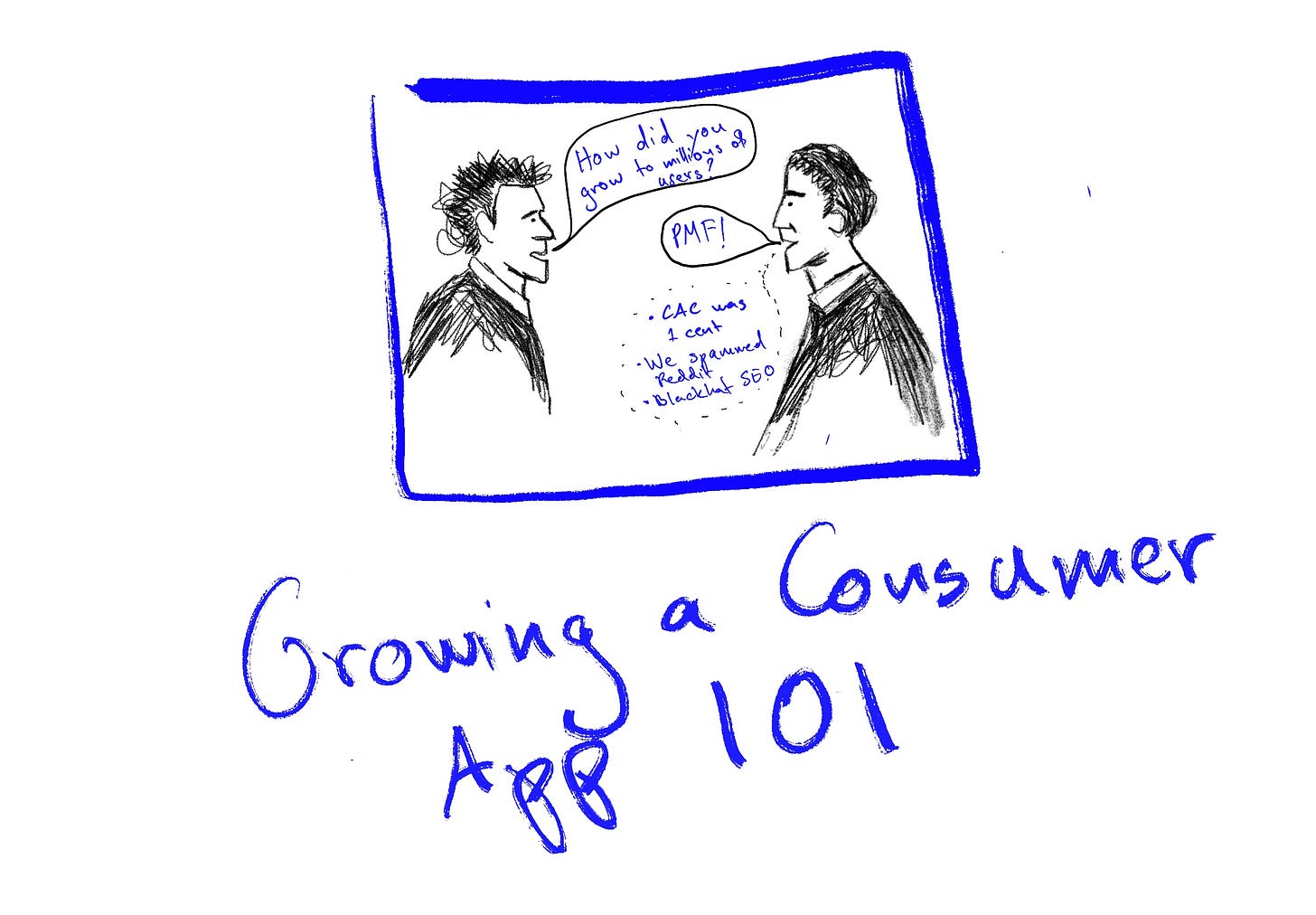“Growth” is a mysterious term in consumer tech, especially for first-time founders. “Do things that don’t scale.” Ok, roger that. But what next? How do you actually grow an app from 0 to something? This is my attempt at answering this perennial question as clearly as possible.
First, three universal truths about growing a consumer app:
The hacks will constantly change. For example, iOS 18 will make app access to the full contact list very difficult. This will make it more challenging for social consumer apps to create social graphs for their users, and therefore more difficult to grow based on ‘people you may know,’ a foundational block of growth hacks till now.
The best way to stay up to date with the latest hacks is by being part of consumer founder communities and following key influencers who share the latest tips.
It’s almost always useless to look for growth lessons from old consumer companies: because hacks constantly change, it can be more misleading than helpful to look at what worked 5+ years ago.
Founders and marketers with the best growth secrets are not sharing them — definitely not for free. If a founder’s answer on some panel sounds too simple to believe, it’s because most of the time, it is. They are not sharing the main thing that helped their app grow because it’s their competitive advantage.
With these three key pillars in mind, this is a structured way to think about growth today if starting from 0.
1. Social content: TikTok, Reels, YouTube Shorts
Learn the differences between all these different platforms by experimenting. Which audience fits your product more?
An easy way to start creating content is by repurposing content. For example, if you’re making an AI travel app (like 99% of the population), you can repurpose videos from fancy hotels and make a series of “Fanciest hotels in the world.”
Then, actually promote your app. Many founders create viral content and think that the user will click on the link in the bio. In reality, this rarely happens and you should promote your app *in-video*. An easy way of doing this is by adding an “Install X app” in the last few seconds.
As a consumer app grows, your marketing/ social media team will start looking more and more like an in-house content studio.
I believe that you should grow your app to a few hundred if not a thousand users via organic content. If it’s not working, then your product is either not focused enough, or the content is not making sense.
Some accounts to follow for tactical strategies on social content:
2. SEO
SEO will have fantastic long-term benefits. Invest in it. Start simple with a blog or even Medium. Then start learning more and more about keywords, referral links, content partnerships, etc.
SEO expert to follow: Thenuka of Daydream
3. Influencer Marketing
At the earliest stages, you should avoid large influencers but rather with small influencers/ everyday content creators with a small following and relatively large impression counts. (Some interesting research seems to support this advice as well.)
These influencers will be easier to reach and build long-term relationships with. The best-case scenario is one in which both your app and your micro-influencer can grow together.
Apps like Airbuds and Locket are following this strategy but at scale. They are hiring and firing dozens of college students based on how many impressions their videos get—a deeper analysis here: Airbuds and Locket.
This account, Guillaume, does great consumer growth strategy deep dives.
4. Paid Ads
Paid ads work. This was one of the main mistakes I made as a first-time founder: we never tested paid ads, and this was to our detriment.
But there’s a danger with ads: you can come too close to the sun and burn by overspending. This is the history of many CPG companies.
The larger the company, the stricter the financial discipline around ad spend needs to be.
5. Other channels: email marketing, in-app referrals, channel partnerships, etc.
I don’t have a lot of experience with these channels, but they’re worth experimenting with depending on your app.
Final Words: Growth Should Inform Product
One purpose of this framework is to help you grow your product.
Another, equally important, purpose is to help you think about your product. Is your product focused enough that repurposed social content alone will drive hundreds of installs?
Is the UI pretty enough that a micro-influencer can drive installs by showing it to their followers?
Is the one-line description clear enough that users can understand it from a 5-second ad? If not, then return to the whiteboard and make your V1 more focused.
You have to think about growth from the start. As AI makes it easier to build products faster, the winners will be decided by their distribution and niche user insights. Many will be able to build, but few will be able to market.
Best of luck — and if you want to discuss your consumer idea, respond to this email or leave a comment below. :)







Great piece
I would like your advise on my idea